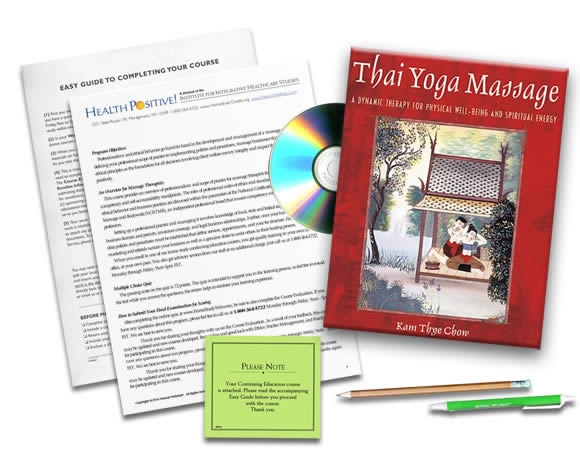
In this unique healing system of Thai Yoga Massage based on yoga, ayurveda, and the martial arts, the massage therapist guides the client through a series of yoga postures while palming and thumbing along the body's energy lines and pressure points. Together these actions result in a treatment that relieves muscular tension, improves circulation, boosts the immune system and balances the body energetically.
The course text leads readers through every aspect of this ancient bodywork therapy using more than 125 detailed, step-by-step photographs. Techniques for performing a one-hour massage are also demonstrated in the accompanying DVD.
Concepts presented include the history, benefits and key elements of the practice, such as anatomy and physiology and contraindications from the Thai viewpoint and tips for integrating Thai concepts with Western health theory.
In this course, you will learn:
Terrell Taylor Jr, LMT
4/6/2024
Stuart Farnell, LMT
3/25/2024
Leonetta Wood, LMT
3/22/2024
Danielle del Prado, LMT
3/18/2024
Andrea Rumery, CMT, BCTMB
3/17/2024

Sharon Burch holds a Masters Degree in Nursing and has been practicing as a nurse since 1974. She is currently a Registered Nurse in the state of Arkansas. Additionally, Ms. Burch studied under many of today's leaders in massage therapy and bodywork during the 1980s, became Nationally Certified through the NCBTMB in 1993 and holds a professional membership with the AMTA.
As founder of Health Positive!, Ms. Burch has created over 60 home study nursing and massage continuing education programs, performed over 65 public, live educational presentations, has written two published books, served as a member on the NCBTMB Continuing Education committee and was a founding member of the National Association of Nurse Massage Therapists.
Sharon is an instructor on many of the Institute's programs and has authored and co-authored various ethics courses and additional titles such as Touch for the Seriously Ill, Stress Reduction Through Bodywork, Staying Well – Naturally, Cardiopulmonary Health and Illness, Chronic Pain Management, Marketing Massage in Four Easy Steps, Preventing Medical Errors, HIV Update for Massage Therapists and Bodyworkers, Understanding HIV, Massage for Edema and more.


Take our free online course: Ethics Refresher
We will not rent/sell your email to anyone.
You'll also receive our newsletter and special offers.
Thank you! An email will be sent to the address provided with instructions on how to enroll in this 1 CE hour course - FREE!
If you do not see our email within a few minutes of signing up, please check your Spam/Junk folders it may have been delivered there instead of your inbox.
If, by chance, you still have not received it within 5 minutes, please call us at 1-800-364-5722, Monday-Friday, between 9am-12:30pm and 1:30pm-5pm EST for assistance.